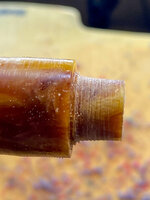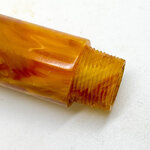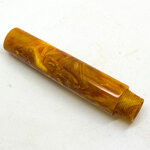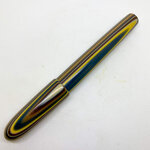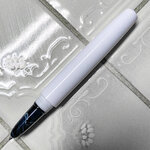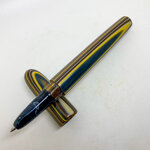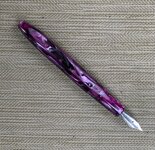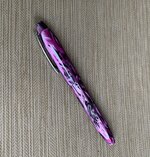spindlecraft
Member
Hi again,
Apologies if this has been asked a thousand times, and for posting so much lately - but as I continue my journey into kitless pen making, I find I am continually hitting stumbling blocks.
I'm having trouble cutting nice, clean threads on the outer tenon of the pen body.
I am using an M10x1 triple start die, as well as a die holder setup from Hinze. I am on a wood lathe,as a metal lathe is not quite in my budget at the moment, and I'm doing the following:
1) I turn down the tenon to be 13.0mm which I double and triple check with digital calipers.
2) I cut a slight relief at the back of the tenon.
3) I am using BLO as a lubricant and keeping everything well lubricated as I cut the threads.
4) I'm taking it nice and slow, doing a few rotations forward, then a slight rotation back to clear the threads.
With that procedure, I am getting results that look like the attached images. That is to say, messy-looking, barely there, gnarled looking threads.
Now... since then, I've started to do the following:
- Turning down to slightly below 13mm (about 12.8mm)
- Cutting a slight bevel at the front of the tenon to make starting the cut a little easier
These two things have noticeably "helped", but I still am not super happy with the threads I am getting.
As far as I can tell, I am doing the same things as what I've watched a few guys on YouTube do, but just not getting nearly as good of results. Could it be I just got a bum die? Or do I need to be backing out of my cut completely to clear out every trace of "ribbon" before progressing with my cut? The matching tap cuts inner threads really well. It's just the outer threads that are giving me problems. Any suggestions on what I could be doing better?
Thanks so much in advance!


Apologies if this has been asked a thousand times, and for posting so much lately - but as I continue my journey into kitless pen making, I find I am continually hitting stumbling blocks.
I'm having trouble cutting nice, clean threads on the outer tenon of the pen body.
I am using an M10x1 triple start die, as well as a die holder setup from Hinze. I am on a wood lathe,as a metal lathe is not quite in my budget at the moment, and I'm doing the following:
1) I turn down the tenon to be 13.0mm which I double and triple check with digital calipers.
2) I cut a slight relief at the back of the tenon.
3) I am using BLO as a lubricant and keeping everything well lubricated as I cut the threads.
4) I'm taking it nice and slow, doing a few rotations forward, then a slight rotation back to clear the threads.
With that procedure, I am getting results that look like the attached images. That is to say, messy-looking, barely there, gnarled looking threads.
Now... since then, I've started to do the following:
- Turning down to slightly below 13mm (about 12.8mm)
- Cutting a slight bevel at the front of the tenon to make starting the cut a little easier
These two things have noticeably "helped", but I still am not super happy with the threads I am getting.
As far as I can tell, I am doing the same things as what I've watched a few guys on YouTube do, but just not getting nearly as good of results. Could it be I just got a bum die? Or do I need to be backing out of my cut completely to clear out every trace of "ribbon" before progressing with my cut? The matching tap cuts inner threads really well. It's just the outer threads that are giving me problems. Any suggestions on what I could be doing better?
Thanks so much in advance!

